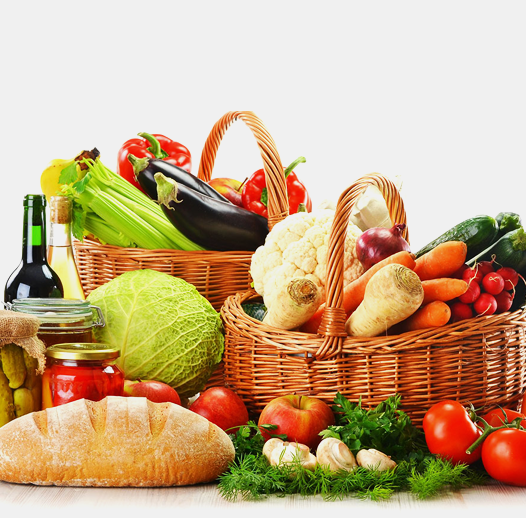AA

Healthy eating is important at every age, but more so as we get older.
Eating healthy and physical activity together can make a difference between a healthy life and time spent relying on others.
It can also prevent or slow down the progress of heart disease, diabetes, osteoporosis and some forms of cancer. It can also help in coping with physical and mental stress, surgery and even a common cold or flu.
Everyone ages at a different rate, but we can expect the following:
Cardiovascular Changes – The heart muscle has to work harder to pump the same amount of blood while blood vessels become stiffer and fatty deposits form on the walls of the arteries. This causes narrowing of the passageway the blood has to travel through, which makes the heart work harder and may lead to high blood pressure.
Weight Changes – Because we are less active we require fewer calories and may find ones body may lose muscle and gain fat. Therefore we may put weight on, which increases the chance of illness.
Changes to Joints, Bones, and Muscles – As we age, bones will naturally shrink. They may find their bones may be more brittle and may start to shrink. Muscles, tendons & joints may become stiffer and one may not be as strong as you once were.
Changes in Digestion, Thirst and Taste – When we age, all senses start to diminish including taste and smell which can make eating less interesting. One may also feel less thirsty, so they may not drink as much. It will also take longer to digest food which may cause constipation.
Kidney Changes – The kidneys will become less efficient and some will have trouble moving waste from the bloodstream. One may also be at risk of Type 2 diabetes or high blood pressure.
Changes to your Eyes – When one ages, their retinas get thinner, eyes produce less tears, and lens gradually turn yellow. Many seniors experience eye problems such as cataracts, glaucoma, or macular degeneration. Anyone with high blood pressure or diabetes are at a higher risk of getting glaucoma
SOME TIPS FOR HEALTHY EATING
Eat a variety of foods.
Find an exercise or activity to do daily.
Eat in Moderation.
Drink lots of water.
Eat More: fruits and vegetables, whole grains (bread, pasta, oatmeal, & brown rice), legumes (dried beans, peas, and lentils), fish, calcium rich foods, unsaturated fats (like vegetable oils, nuts, and seeds), lean meat and poultry.
Eat Less: saturated fats (found in butter, lard, deli meat, bacon, and sausage), trans fats (found in processed foods, cookies, cakes and deep fried foods), refined or enriched grains, salt, and sugar (including sugary drinks, jams, candies, and baked goods).
The hard part is eating in a way that helps you maintain a healthy weight, while providing you with the nutrients you need for good health. The best reference is Canada’s Food Guide. The four main food groups are:
1. Vegetables and Fruits
2. Grain Products (bread, rice, pasta, and cereal)
3. Milk and Alternatives (cheese, yoghurt, kefir and soy beverages)
4. Meat (fish, poultry, lean meats, eggs, beans, lentils, chickpeas, tofu, & nuts)
